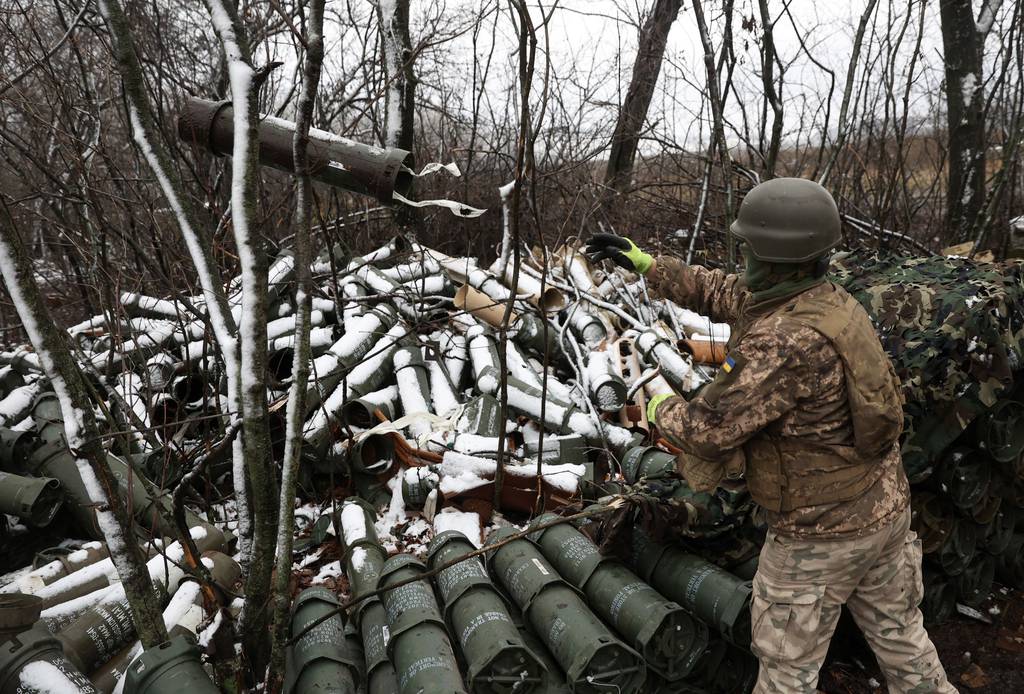As the U.S. Army seeks to drastically ramp up its 155mm munitions production to 100,000 a month by the end of 2025, the biggest concern for the service’s acquisition chief is being able to secure enough explosives to fill them.
“You have to produce enough explosives – either IMX-104 or TNT – to fill that many shells that fast and that production capacity does not exist in the United States by itself,” Doug Bush said during a Feb. 5 Center for Strategic and International Studies event in Washington. “We’re having to go overseas to allies. Luckily, we have many, [that are] highly capable.”
Prior to the war in Ukraine, the U.S. could build about 14,400 of the artillery shells per month. But as Ukrainian forces burn through the ammunition for howitzers sent to the country, the U.S. has taken a wide variety of steps to increase the speed and capacity of 155mm munitions production.
Bush said at CSIS that each 155mm shell contains 22 pounds of explosives. If the U.S. ramps up to 100,000 munitions a month, it would need to produce 26.4 million pounds of explosives, also known as “energetics,” per year to keep up.
The Army awarded $1.5 billion in contracts to nine companies in the fall of 2023 to companies in the U.S., Canada, India and Poland to boost global production of 155mm artillery rounds. The contracts included procuring 14.2 million pounds of bulk energetics, consisting of TNT and IMX-104 explosive.
Increasing production is also riding on Congress approving a pending supplemental budget request which aims to support Ukraine and Israel. The supplemental includes $600 million that would triple the amount of IMX-104 explosive that is made at Holsten Army Ammunition Plant in Tennessee. The plant produces roughly five million pounds a year with a plan to increase to 13 million pounds.
Another $93 million would upgrade facilities to reestablish M6 propellant production at Radford Army Ammunition Plant in southwest Virginia. That propellant is used to shoot the shells, but is no longer in production in the U.S.
An additional $14 million would cover the construction and recommissioning of a black powder – an explosive combination of sulphur, carbon and potassium nitrate – production line with a company called Goex in Minden, Louisiana.
Taking on TNT
The Army would also use $650 million to design and construct a domestic TNT production facility, which will likely be at Radford Army Ammunition Plant, Bush has said previously.
Currently there is no TNT production in the U.S. and the supplies come from allies such as Australia and India.
Poland is a major supplier, but with every country ramping up production to support Ukraine and meet their own demands, Bush noted late last year, the U.S. will need to onshore TNT production.
The Army issued a request for information in the fall of 2023 on Sam.gov for the design, construction and commissioning of a facility capable of producing five million pounds of TNT per year. Responses from industry are due Feb. 17.
The service is aiming to complete construction and open the facility no later than 48 months after awarding a contract. The RFI notes that the government is assessing multiple sites for the facility.
Jen Judson is an award-winning journalist covering land warfare for Defense News. She has also worked for Politico and Inside Defense. She holds a Master of Science degree in journalism from Boston University and a Bachelor of Arts degree from Kenyon College.








